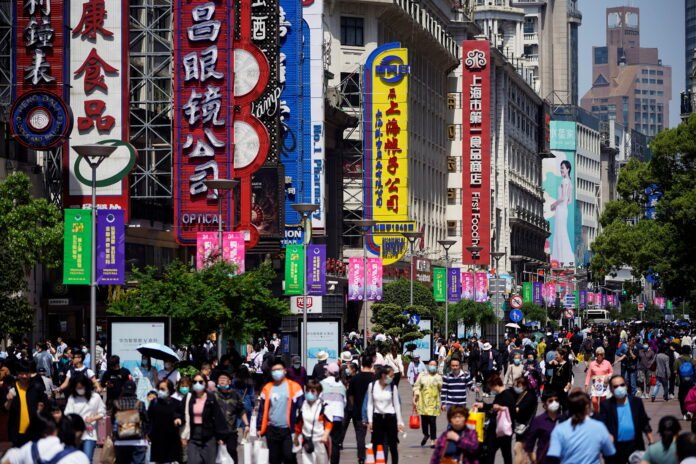
On the first day of a significant public holiday in China, travel by rail and car experienced a notable surge as citizens sought to navigate economic challenges while still enjoying their time off. With the onset of the five-day holiday starting with May Day, there was a distinct trend towards cost-conscious travel choices, reflecting the ongoing economic uncertainties.
As the holiday approached, domestic airline ticket prices were observed to be declining, suggesting that more travelers were opting for alternative modes of transportation such as driving or making early bookings to secure cost savings. This shift in travel behavior underscores a broader trend of consumers prioritizing frugality and seeking to minimize expenses amidst economic constraints.
The surge in rail and car travel comes amid a broader rebound in travel activity across China since the relaxation of stringent COVID-19 control measures at the end of 2022. While there has been a resurgence in travel, consumer spending on these trips has not kept pace, limiting the extent to which the travel boom can contribute to overall economic recovery.
The preference for rail and car travel reflects a pragmatic approach by Chinese consumers, who are adapting to the economic challenges facing the country. By choosing more affordable travel options, individuals are able to enjoy the benefits of a holiday while managing their expenses effectively.
The surge in holiday travel also highlights the resilience of China’s transportation infrastructure, particularly its extensive railway network and road systems, which have facilitated increased mobility despite economic headwinds. The availability of reliable and efficient transportation options has played a crucial role in enabling people to travel during holidays and other occasions.
Looking ahead, the trend of cost-conscious travel is likely to persist as consumers continue to navigate economic uncertainties. While travel remains an important aspect of people’s lives, the focus on affordability and prudent spending is expected to shape travel preferences in the foreseeable future.
Despite the surge in holiday travel, there are lingering concerns about the broader economic implications of subdued consumer spending. While increased travel activity may boost sectors such as transportation and tourism, the lack of significant spending on leisure activities could limit the overall economic impact. This discrepancy underscores the complex interplay between travel behavior and consumer confidence in China’s evolving economic landscape.
Moreover, the preference for rail and car travel over air travel may also reflect lingering apprehensions about the ongoing COVID-19 pandemic. While China has largely contained the spread of the virus, occasional outbreaks and the emergence of new variants continue to pose challenges. As a result, some individuals may feel more comfortable traveling by modes that offer greater control over their environment and exposure to potential risks.
The surge in holiday travel by rail and car also raises questions about infrastructure capacity and logistical challenges. While China boasts an extensive and well-developed railway network, accommodating a sudden influx of travelers can strain resources and lead to congestion. Similarly, increased traffic on roads during peak travel periods can result in delays and disruptions, highlighting the need for effective management strategies to ensure smooth and efficient travel experiences.
From a broader economic perspective, the surge in holiday travel underscores the resilience of China’s transportation sector in the face of ongoing challenges. Despite economic headwinds and shifting consumer preferences, the country’s robust infrastructure and efficient transport systems have continued to facilitate mobility and connectivity, supporting economic activity and social cohesion.
Looking ahead, policymakers and industry stakeholders may need to explore innovative solutions to address the evolving dynamics of holiday travel in China. This could involve initiatives to enhance capacity and efficiency in transportation infrastructure, as well as measures to promote sustainable and responsible travel practices. By leveraging technology and data-driven insights, stakeholders can optimize travel experiences and mitigate potential challenges associated with increased mobility.
Additionally, fostering consumer confidence and incentivizing spending on leisure activities could be key strategies to stimulate economic growth in the post-pandemic era. This may involve targeted marketing campaigns, promotional offers, and policy interventions aimed at encouraging discretionary spending and revitalizing the tourism and hospitality sectors.
Overall, while the surge in holiday travel by rail and car reflects the resilience and adaptability of China’s transportation sector, it also underscores the need for holistic approaches to address the broader economic implications of travel behavior. By embracing innovation, sustainability, and consumer-centric strategies, stakeholders can navigate the complexities of holiday travel and chart a path towards inclusive and sustainable growth.
